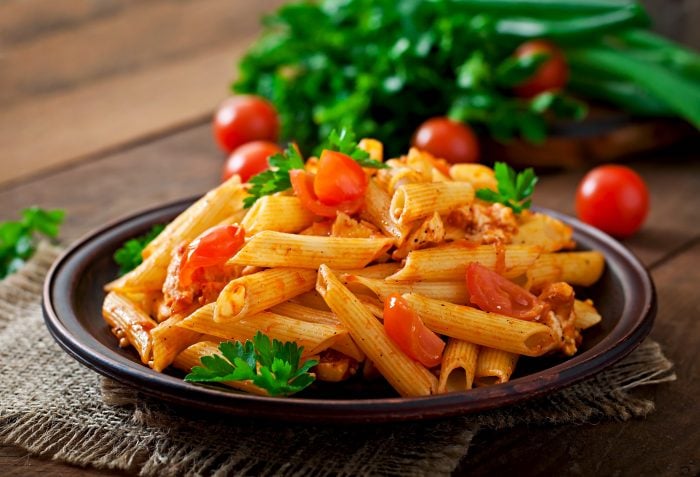4 Interesting Facts About Italian Food Culture
When you think about Italy, three things immediately come to mind. Its ancient architecture, its pictorial arts tradition, and of course, its wonderful cuisine. Indeed, the Italian food culture has had (and still has) a huge influence on the gastronomical industry around the world. It is so greatly admired by both tourists and food experts, that it is often referred to as an art form.
Although Italians are widely known for their incomparable pasta, Italian cuisine has two other pillars —wine and cheese. As regards wine, Italy is home to some of the most important vineyards in the world. Recently, archaeologists found out that this tradition is older than it was originally thought, as they discovered a collection of wine jars in a cave in Sicily that dates back to around 4000 BC.
To celebrate the National Pizza Day (February 9th), —and honestly, because we absolutely love Italian food culture, we have compiled a list of interesting facts about Italian cuisine that will make renew your appreciation for this fascinating country.
The courses and their order in Italian food culture
Even though Italians are known for their informal manners, they are quite methodical when it comes to eating, especially in the kind of foods can and cannot be combined. At the same time, they have a profound understanding of the order in which the dishes should be presented, based not on subjective preferences but on knowledge of how the body processes food.
A typical Italian menu is divided into antipasti (appetizers), mensa prima (pasta first course), mensa secunda with contorni (meat second course with a side), and dolci (desserts) at the end. More exclusive restaurants may even divide these courses into Terra (land) and Mare (Sea). The Dolce consists of sweets, cheese, or fresh fruit. Usually, this section is followed by coffee, which is served in a small cup and meant to be drunk quickly rather than sipped. Italian coffee is traditionally intense in flavour, black, and sugary, but you can ask the waiter to prepare it differently or to bring you a glass of Italian liquor instead.
Italians eat dinner late
One of the first things you’ll have to come to terms with once you’ve arrived in Italy is that Italians tend to do things significantly later than people from English-speaking countries. For the typical Italian, having dinner at 9 or even 10 is perfectly normal. So, if you’re an early eater who starts to think about dinner at 5 pm, you might be up for a huge disappointment, as you won’t find a good supply of open restaurants until at least two hours later.
The good news is that if you want to have dinner at around 7.30, chances are you’ll have the place pretty much to yourself. This is a huge plus if you value fast service as much as a great meal. As we are about to see, Italians tend to have a rather slow service pace that might get worse with a full house.
The pace of service is very relaxed
While American food service is based on speed (“1-minute guarantee or you get FREE food!”), in Italy, doing things too fast is seen as discourteous. Food, for them, is not just nourishment, it is a big part of their social life. As a result, they value hospitality over time optimisation. Rushing a customer through a meal so that the waiter can bring them the bill and sit the next person would be seen as rude beyond belief.
If it’s true than travelling means learning new things (which we think it does), then travelling to Italy might teach you the value of patience. Although at first you might feel tempted to call the waiter every five minutes to ask him when your food will be ready, you will soon start to relax and appreciate your time at the dinner table as an opportunity to enjoy a good conversation and learn about different customs by noticing other people’s behaviour.
Italian food culture is very present in the language
As we said above, food in Italy is a huge part of how people live and relate to others. Family get-togethers are frequent and nearly always centred around food and wine. For this reason, it’s not a surprise that many popular sayings in Italy have to do with eating and drinking. For example, there is one that goes “Pollo, pizza e pani si mangiano con le mani.” Minus the rhyme, it means something like “Chicken, pizza and bread should be eaten with your hands”. This shows that pleasure, for Italians, is more important than etiquette.
Then there is another wise quote, “La cucina piccola fa la casa grande” that says that even the smallest of kitchens can make any house big. This means that domestic love and companionship, for Italian people, find their best expression when the family is together in the kitchen, either cooking or enjoying a nice meal. That is when Italians feel richest in spirit, no matter what size their house is or how many luxuries it has.
As far as we are concerned, these quotes contain two valuable lessons.
We hope you have enjoyed our post on Italian food culture. As you can see, learning about how Italians relate to food is learning about how they see life. As a result, getting to know about their cuisine is getting to know about a fascinating worldview that has a lot teach to the rest of the world.
At Language Trainers, we work with Italian teachers who love to share their language and culture with students. So, if you want to learn Italian in a meaningful way, visit our website now and get a personalised course based on your needs and preferences.



